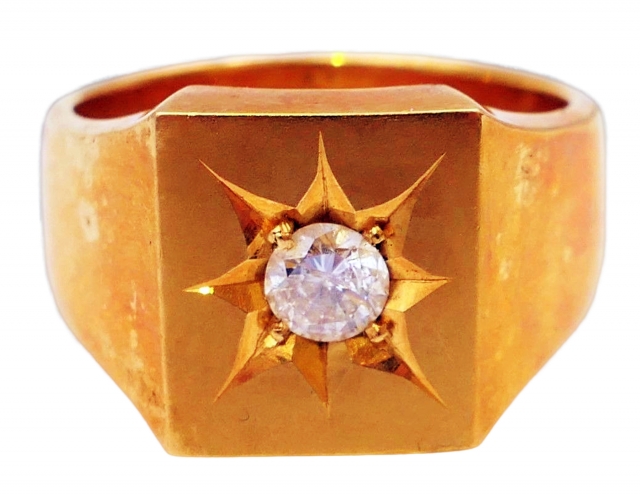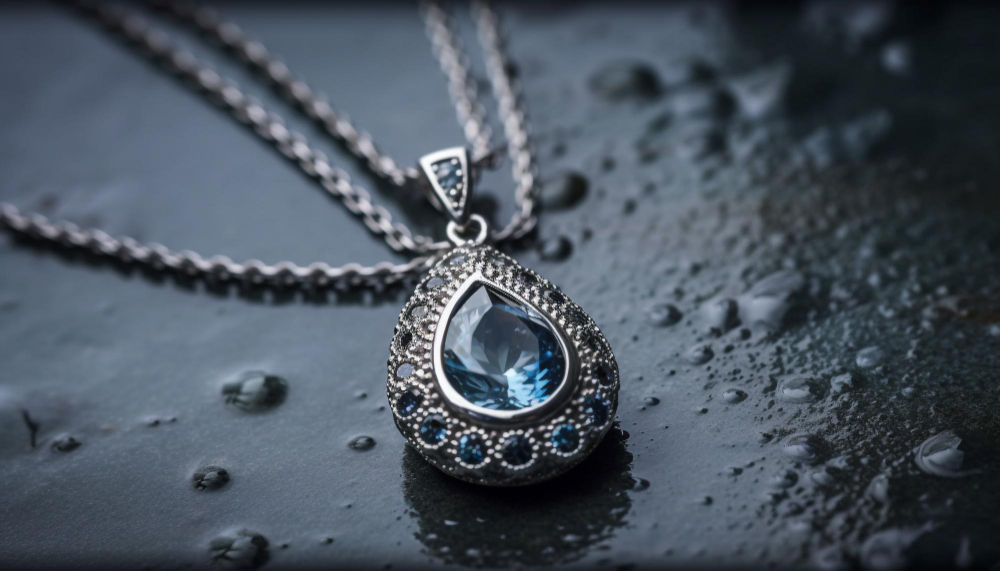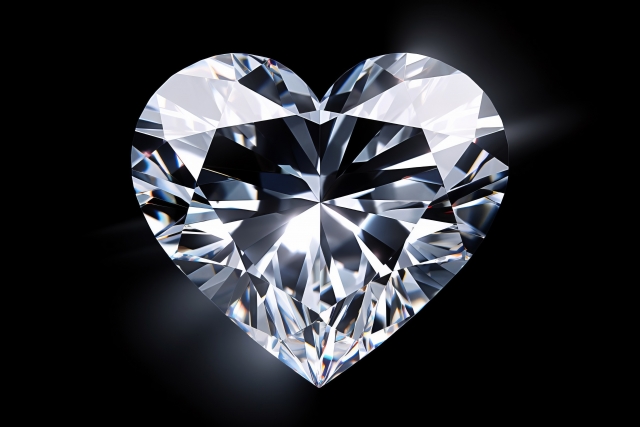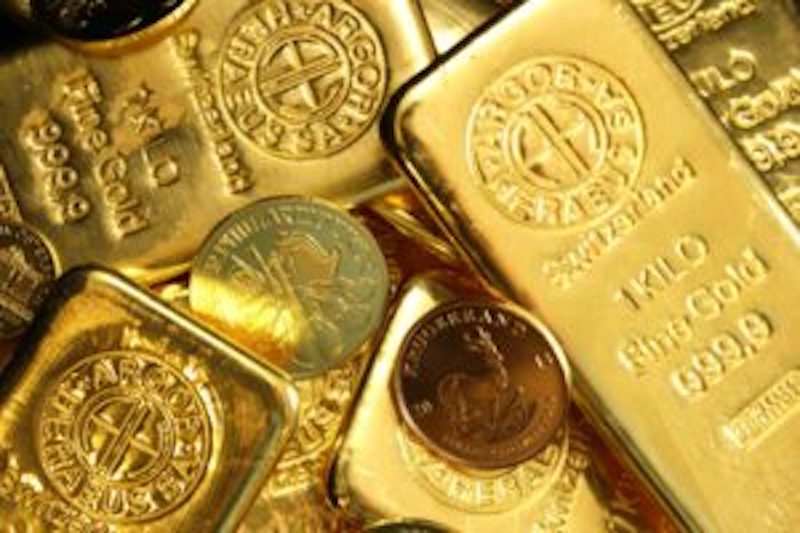In today's diverse investment landscape, savvy investors are rediscovering the enduring allure of an ancient asset: jewelry.
Beyond its luxurious facade, jewelry stands as a tangible asset with a history of appreciating value.
So, let's dive into this comprehensive guide to understand the nuances of jewelry investment, perfect for the modern entrepreneur seeking unconventional opportunities.
Contents,
- The Timeless Charm of Jewelry: Beyond Mere Prestige
- Jewelry Investment: A Gleaming Opportunity for Entrepreneurs
- Historical Perspective
- Factors Influencing Jewelry's Value
- Advantages and Disadvantages of Jewelry Investment
- Diving into Jewelry Investment
- Caring for Your Jewelry Investment
- Selling and Liquidating Your Jewelry Investment
- Conclusion
The Timeless Charm of Jewelry: Beyond Mere Prestige

For centuries, jewelry has been a beacon of affluence and status. But its significance goes beyond mere adornment. Elements like gold, diamonds, and platinum are more than just decorative; they are globally recognized assets with inherent value.
Jewelry Investment: A Gleaming Opportunity for Entrepreneurs
In the dynamic world of business, innovative entrepreneurs continually seek varied investment horizons.
While traditional assets like stocks and bonds hold value, the realm of jewelry shines brightly, offering a blend of aesthetic and financial rewards.
Gold

When it comes to gold, London Bullion Market Association plays a pivotal role in the gold market, setting the price of gold twice daily, known as the "London Gold Fixing," which stands as a beacon in the global investment landscape.
Diamond

On the other hand, diamonds are guided by the Gemological Institute of America (GIA) (GIA). The universally recognized "Four Cs" set the gold standard in assessing diamond quality, offering clarity to investors and enthusiasts alike.
Platinum

And then there's platinum. Platinum, with its understated elegance, has its value intricately tied to global market dynamics. Cities like London and Zurich, pivotal in the platinum trade, emerge as the epicenters of its valuation.
In summary, jewelry, a blend of art, history, and intrinsic value, presents a compelling investment narrative. Beyond mere financial gains, it's about possessing a tangible piece of legacy and luxury. As global markets ebb and flow, the allure of timeless assets like gold, diamonds, and platinum remains unwavering, positioning them as astute additions to any diversified portfolio.
Historical Perspective
From time immemorial, jewelry has served as more than just an ornamental accessory. It has symbolized wealth, power, and prestige. For instance, ancient Egyptian pharaohs were interred with vast quantities of gold and gemstones, while European royalty used jewels as a testament to their authority.
Interestingly, in ancient India, owning gold was seen as a sign of prosperity. Kings and emperors showcased their affluence through elaborate jewelry pieces. Similarly, in ancient Rome, jewelry acted as a societal rank marker, with different classes donning distinct jewelry types.
Fast-forwarding to the Renaissance, the Medici family in Florence, renowned for their extensive art and jewel collection, viewed these items not just for their beauty but also as wealth preservation tools.
In the modern era, during economic uncertainties, many investors pivot to gold as a safeguard against financial instability. Its enduring value, unlike fiat currencies, stands the test of time. Furthermore, institutions like the Gemological Institute of America (GIA) and the London Bullion Market Association (LBMA) have brought transparency and trust to the jewelry market, enabling investors to make well-informed decisions.
In conclusion, jewelry's investment allure is deeply entrenched in our history. Its steadfast role as a value reservoir makes it an evergreen and judicious investment avenue.
Factors Influencing Jewelry's Value
Rarity:
One of the most significant factors influencing the value of jewelry is its rarity. Unique gemstones, metals, or designs that are not easily found in the market tend to fetch higher prices. For instance, red diamonds are among the rarest diamonds in the world, making them highly valuable.
Historical Significance:
Jewelry pieces with a rich history or those that once belonged to notable figures can have their value amplified. Such pieces often carry stories of eras gone by, making them not just valuable in terms of materials but also as historical artifacts.
Market Dynamics:
The global economy and market trends play a crucial role in determining jewelry's value. Factors such as geopolitical events, economic downturns, or surges in demand can influence prices. For example, during economic crises, gold often sees a surge in value as investors look for stable assets.
Craftsmanship:
The skill and artistry with which a piece of jewelry is crafted can significantly influence its value. Handmade pieces, intricate designs, or jewelry made by renowned craftsmen can command higher prices due to the labor and expertise involved.
Cultural Significance:
Certain jewelry pieces can hold cultural or symbolic significance, making them more valuable in specific regions or communities. For instance, jade is highly valued in Chinese culture for its beauty and symbolic meanings.
Branding and Designer Names:
In today's world, branding is powerful. Jewelry pieces from renowned designers or luxury brands can fetch higher prices simply because of the prestige associated with the name. Brands like Tiffany & Co., Cartier, or Bvlgari carry a reputation that adds to the value of their pieces.
Condition and Maintenance:
The condition of a jewelry piece can also influence its value. Well-maintained pieces that show little to no signs of wear and tear are likely to be valued higher. Additionally, pieces that come with their original packaging, certificates of authenticity, or provenance can also see a boost in their value.
Provenance:
The origin or source of a jewelry piece can add to its allure and value. For instance, diamonds sourced from the Golconda mines in India are highly prized for their quality and historical significance.
In conclusion, while the intrinsic value of the materials used in jewelry plays a significant role in determining its worth, various other factors, both tangible and intangible, come into play. For potential investors or collectors, understanding these nuances can provide deeper insights into the world of jewelry valuation.
Advantages and Disadvantages of Jewelry Investment

Like any investment, jewelry comes with its set of advantages and challenges. On the upside, it offers tangible benefits, a hedge against inflation, and a touch of luxury. Conversely, potential pitfalls include liquidity concerns and market volatility.
Pros:
Points
- Tangible Asset: Unlike stocks or bonds, jewelry is a physical asset that you can hold, wear, and enjoy. It provides a sense of security as its value doesn't vanish even in electronic or financial system failures.
- Intrinsic Value: Precious metals and gemstones have inherent value. Gold, for instance, has been valued for millennia and is likely to retain its worth in the foreseeable future.
- Hedge Against Inflation: Historically, precious metals like gold have served as a hedge against inflation. When paper currency loses value, tangible assets like jewelry often remain stable or even appreciate.
- Cultural and Emotional Value: Jewelry often holds sentimental value, passed down through generations. It can also represent cultural heritage, making it priceless in some instances.
- Diversification: Investing in jewelry allows diversification of an investment portfolio, reducing reliance on traditional financial markets.
- Potential for Appreciation: Unique, rare, or historically significant pieces can appreciate over time, especially if there's increased demand in the market.
Cons:
Points:
- Liquidity Concerns: While jewelry is valuable, converting it into cash can sometimes be challenging. It may not be as liquid as stocks or bonds, and selling it quickly might result in getting less than its actual worth.
- Storage and Insurance: High-value jewelry requires secure storage and insurance, leading to additional costs.
- Market Fluctuations: The value of precious metals and gemstones can be volatile, influenced by global market dynamics, geopolitical events, and economic factors.
- Maintenance: Jewelry, especially pieces adorned with gemstones, may require regular maintenance to retain their luster and value.
- Assessment and Authenticity: There's a risk of fraud in the jewelry market. Ensuring the authenticity and quality of a piece often requires expert assessment, which can be costly.
- Branding Markup: Designer or branded jewelry often comes with a significant markup. While the brand name might add to the piece's prestige, it doesn't always guarantee a proportional increase in resale value.
In conclusion, while investing in jewelry offers several advantages, it's essential to approach it with a clear understanding of the potential challenges. Proper research, expert consultation, and a long-term perspective can help in making informed decisions in the realm of jewelry investments.
Diving into Jewelry Investment
Before plunging into jewelry investment, thorough research is paramount. Building rapport with industry experts and understanding certifications can ensure you're getting genuine value. Moreover, attending auctions and trade shows can provide invaluable market insights.
step
1Efficient Research:
Before making any investment, it's crucial to educate oneself. Understand the basics of gemology, the history of jewelry, and the current market trends. Resources like books, online courses, and reputable jewelry websites can provide a wealth of knowledge.
step
2Trusting Experts:
Building relationships with established jewelers, gemologists, and industry experts can be invaluable. They can offer insights, verify authenticity, and guide you in making informed decisions.
step
3Certifications and Authenticity:
Always ensure that the jewelry or gemstone you're investing in comes with a certification from recognized institutions like the Gemological Institute of America (GIA) or the American Gem Society (AGS). These certifications confirm the quality and authenticity of the piece.
step
4Attend Auctions:
Auctions, especially those by renowned houses like Sotheby's or Christie's, can be a treasure trove of information. They offer a glimpse into rare and valuable pieces, current market demand, and the prices that serious collectors are willing to pay.
step
5Participate in Trade Shows:
Trade shows and jewelry exhibitions provide an opportunity to meet industry experts, view a vast array of pieces, and understand market trends. Events like the Baselworld in Switzerland or the JCK Las Vegas are significant events in the jewelry calendar.
step
6Understand Resale Value:
While some pieces might be captivating, it's essential to consider their resale value. Brands, historical significance, rarity, and current market demand can influence this.
step
7Diversify Your Investments:
Just as with any other investment portfolio, diversification is key in jewelry investment. Consider investing in different types of jewelry, gemstones, and metals to spread risk and potential returns.
step
8Stay Updated:
The world of jewelry is dynamic. New mining discoveries, changing fashion trends, and global economic factors can influence the market. Regularly updating your knowledge can help you stay ahead of the curve.
In conclusion, investing in jewelry is not just about acquiring beautiful pieces; it's about understanding the art, history, and science behind them. With the right approach, not only can you enjoy the aesthetic and cultural value of these pieces, but you can also see them as valuable assets that can potentially offer significant returns.
Caring for Your Jewelry Investment
Investing in jewelry is just the beginning of the journey. To ensure that your precious pieces retain their value and beauty over time, proper care and maintenance are essential. Here's a comprehensive guide to help you protect and preserve your jewelry investment:
Proper Storage:
- Individual Pouches: Store each piece of jewelry in soft, individual pouches to prevent them from scratching against each other.
- Jewelry Boxes: Invest in a high-quality jewelry box with separate compartments and soft lining.
- Climate Control: Store jewelry in a cool, dry place. Humidity can tarnish metals and damage certain gemstones.
Regular Cleaning:
- Professional Cleaning: Periodically, have your jewelry professionally cleaned to maintain its luster.
- At-Home Cleaning: Use a soft cloth and appropriate cleaning solutions. Avoid harsh chemicals that can damage gemstones or erode metals.
Avoid Physical Damage:
- Daily Activities: Remove jewelry during activities like gardening, cooking, or exercising to prevent physical damage or exposure to chemicals.
- Protect Gemstones: Some gemstones are delicate and can chip or scratch easily. Handle them with care.
Insurance:
- Appraisals: Regularly have your jewelry appraised to ensure its insurance value is up-to-date.
- Specialized Insurance: Consider getting specialized jewelry insurance, especially for high-value pieces, as standard home insurance might not offer adequate coverage.
Periodic Inspections:
- Check for Wear and Tear: Regularly inspect your jewelry for signs of wear, such as loose gemstones or clasps.
- Professional Inspection: Have a jeweler inspect your pieces annually to ensure everything is in good condition.
Avoid Harmful Substances:
- Cosmetics and Perfumes: Apply makeup, perfumes, and lotions before putting on jewelry to prevent residue buildup.
- Chemicals: Avoid exposing jewelry to chemicals like chlorine, which can damage metals and gemstones.
Travel Considerations:
- Travel Cases: Use specialized travel cases for jewelry to protect them during transit.
- Avoid Checked Luggage: Always carry valuable jewelry in your carry-on luggage to prevent loss or theft.
Documentation:
- Keep Certificates: Always store authenticity certificates, appraisals, and any other relevant documentation in a safe place.
- Photographs: Maintain up-to-date photographs of your jewelry pieces for insurance and identification purposes.
In conclusion, while jewelry is a symbol of beauty and wealth, it's also a tangible asset that requires meticulous care. By following these guidelines, you can ensure that your jewelry investment remains secure, radiant, and valuable for years to come.
Selling and Liquidating Your Jewelry Investment
When the time comes to cash in, knowing when and where to sell is vital. Additionally, understanding financial implications, like taxes, can significantly impact your net returns.
Timing is Key:
- Market Research: Keep an eye on the current market trends for precious metals and gemstones. Sometimes, selling during a high-demand period can yield better returns.
- Economic Indicators: Economic downturns often see a surge in gold and precious metal prices as they are considered safe-haven assets.
Appraisals:
- Updated Valuation: Before selling, get an updated appraisal of your jewelry to understand its current market value.
- Reputable Appraisers: Always choose certified and reputable appraisers to ensure accuracy.
Finding the Right Buyer:
- Jewelry Stores: Some jewelry stores offer buy-back options, especially if you purchased the piece from them.
- Auctions: Renowned auction houses can be a good platform for selling high-value, unique, or antique pieces.
- Online Platforms: Websites like 1stdibs or Blue Nile can be suitable for selling certain jewelry items, but ensure you understand their terms and commission structures.
- Private Buyers: For unique or highly valuable pieces, private collectors might offer the best prices.
Understand Taxes:
- Capital Gains: If your jewelry has appreciated in value since you purchased it, you might be liable for capital gains tax upon selling.
- Documentation: Maintain all purchase receipts and documentation to calculate accurate capital gains.
Negotiation Skills:
- Know Your Bottom Line: Before entering negotiations, have a clear idea of the minimum price you're willing to accept.
- Be Open: While it's essential to know your jewelry's worth, be open to negotiations, especially if you're keen on a quick sale.
Authenticity and Certification:
- Provide Documentation: Offering potential buyers authenticity certificates, appraisals, and any other relevant documentation can instill confidence and potentially fetch a higher price.
- History and Provenance: If your piece has historical significance or an interesting backstory, it can add to its value.
Consider Financial Implications:
- Immediate Needs vs. Long-Term Value: If you're not in immediate need of funds, consider the long-term appreciation potential of your jewelry before selling.
- Consult a Financial Advisor: Especially for high-value transactions, consulting with a financial advisor can provide insights into the tax implications and the best ways to reinvest the proceeds.
In conclusion, selling jewelry is a nuanced process that requires careful consideration and preparation. By understanding the market, being aware of the financial implications, and finding the right buyer, you can maximize the returns on your jewelry investment.
Conclusion
Drawing from the vast spectrum of investments, jewelry, with its radiant allure and rich history, stands out as more than just a visual treat. To the insightful investor, it embodies a fusion of history, art, and finance. Armed with the right knowledge and a touch of intuition, jewelry can elevate a portfolio, serving as both its centerpiece and a testament to one's investment acumen.
Beyond mere asset acquisition, for the discerning entrepreneur, jewelry investment is about inheriting a legacy, delving deep into the intricacies of craftsmanship, and marveling at the artistry behind each creation. It's about seeing beyond the surface, recognizing a gem's worth not just in carats or cuts but in its investment stature.
Venturing into jewelry investment with a well-informed strategy, bolstered by innate intuition, can be immensely gratifying. Not only does it promise financial gains, but it also bestows the unmatched pleasure of possessing art, history, and eternal elegance.
For a deeper dive into the world of jewelry investment and to understand its sparkling potential, check out our detailed guide on The Art of Jewelry Investment: A Comprehensive Guide
Ultimately, jewelry transcends being a mere ornament or asset; it mirrors one's foresight, zeal, and investment expertise. For those willing to navigate this journey with diligence and insight, the realm of jewelry unfurls a world of sparkling opportunities, rich in both monetary and aesthetic rewards.
